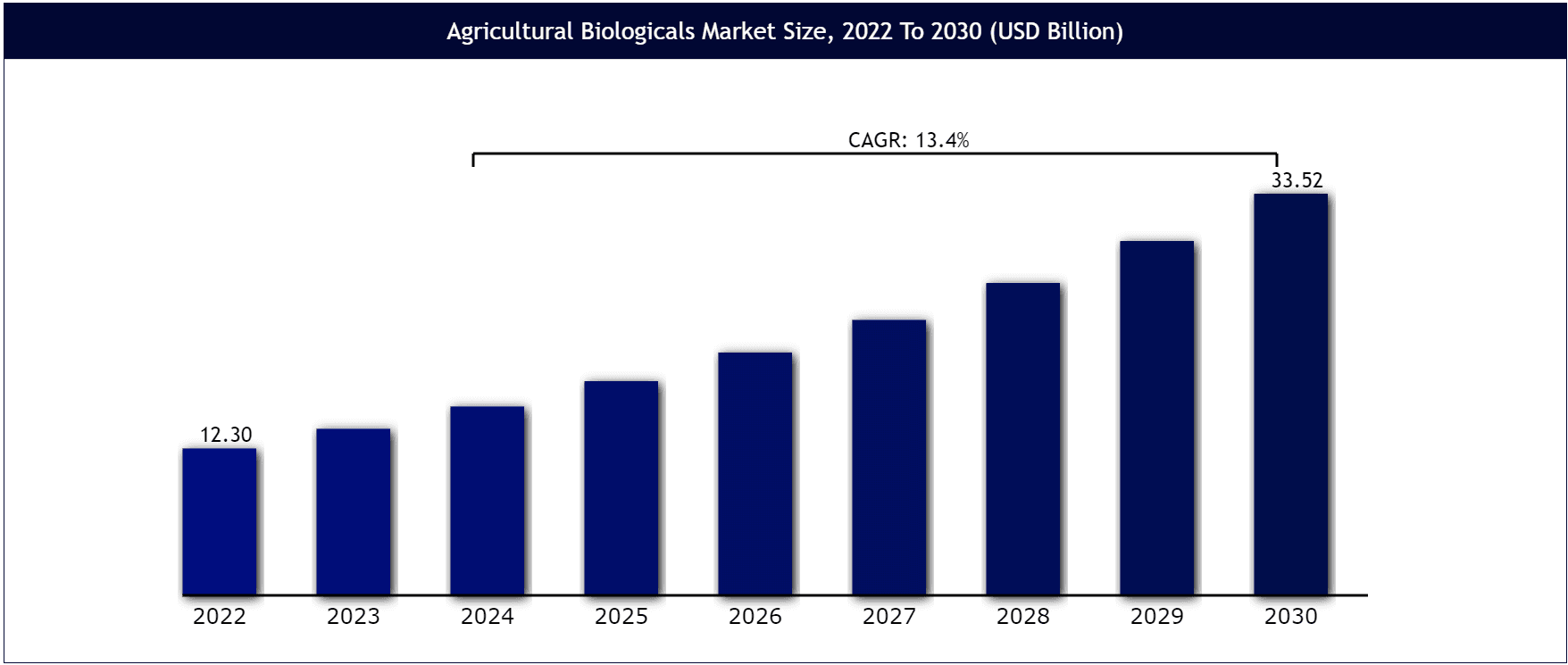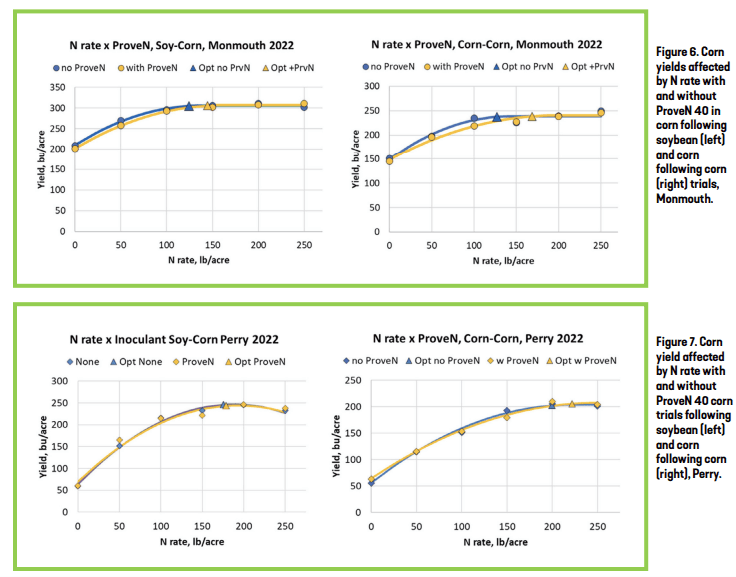Why is there so much variability in agricultural biology products, and how can we fix them?
Soil microbiology is a field that has been under deeper investigation over the past few decades and has made its appearance within mainstream agricultural product lines over the past 5-10 years. The agricultural biological market is already a 12-billion-dollar industry with projections to grow to 33 billion dollars by the end of the decade (Vantage Market Research). With any novel technology that is showing an explosive emergence to market, there is a broad spectrum of product quality, ranging from pioneering products to brands looking to make a fast buck camouflaged within the chaos of the unknown. Navigating a slew of new products making a litany of promises can be difficult, especially when the products are as temperamental as biology, where our understanding of the soil microbiome is limited, and products are composed of living organisms.

Beyond the complexity of the products themselves, farmers tend to have rigid infrastructure that is geared for high efficiency conventional agriculture. To fit the model that growers are accustomed to, most companies are attempting to mold biology to conventional agriculture. This includes making products bottled off the shelf, centralizing production, allowing mixing with chemicals and fertilizers, and hunting for proprietary strains that can be sold at a premium and marketed as unique. While there is a need to fit solutions within existing infrastructure, bending over backwards to make products easy to integrate, market, and grab off a shelf has an impact on product efficacy and quality.
Any product that has been bottled is dormant and will remain so until it receives the proper environmental signals to become active. From a biological perspective, this can be a huge problem, and it is one of the largest reasons bottled products tend to have spotty results, if they work at all. This is exemplified in studies performed by North Dakota University in conjunction with other universities across the Midwest, where four leading bottled biologicals marketed to fix nitrogen in the field were tested in the north central region including Ohio, Nebraska, Kentucky, Kansas, Michigan, Missouri, Indiana, Minesota, Illinois, and North Dakota. Of the 53 trials, only two showed any response, and those beneficial trials were far below the “guaranteed” nitrogen benefit of those products. While those biological companies have pushed back on those results, , we have reviewed the study, and it seems as through the product application protocols were followed, and fertilizer reductions were made alongside full application rates with and without product to verify their fertilizer saving potential. These products stake their claims on increasing nitrogen and saving on fertilizer reductions, given that yield is intrinsically tied to nitrogen availability we expect that yield will increase if these products deliver on their promise. The study showed that there was no impact to yield through product implementation, even with fertilizer reductions and corresponding controls. As seen in the data below, it did not matter how much nitrogen was reduced, the products showed no response when implemented in field.

There are a lot of reasons these products do not work. For one thing, they are attempting to apply a laboratory grown organism into a complex ecosystem that already exists in those fields. Beyond having no native defenses to the microbes in soils across the US, these products are applied dormant, and often with fertilizer and chemicals. Microbes do not like salt, nor do they tend to function perfectly in conjunction with all chemical applications. Effectively, a microbe that is outside its preferred environment, is applied with adjuncts that make it more difficult for the microbe to become active. If by some miracle it can become active, it then has to compete with the native microbes that are perfectly suited to the conditions in the soil. What are the odds that these non-native bacteria can awaken in the soil and then beat out the billions of other bacteria for resources within that ecosystem? When looking at the results from Nebraska University, it doesn’t look good.
Further, even if the microbes do function as intended, soil ecology is more complex than just throwing a bacterium into a field. Say these microbes start to fix nitrogen, why are they fixing nitrogen? It’s not to help a plant, they fix nitrogen so that they can replicate and grow within the soil. While this leads to a net increase in nitrogen in the soil profile, much of that nitrogen is trapped in the microbial biomass and is not plant available. To release nitrogen and other nutrients bound within microbial biomass, predatory species need to exist within the ecosystem. Without establishing an effective grazing population of protozoa, beneficial nematodes, arthropods, and earthworms those nutrients will stay where they are.
A need to address issues with biologicals surrounding product efficacy, storage, and environmental fitness have been called out in numerous studies. For example, a 2021 review of nitrogen loss and mitigation strategies published in sustainability stated,
“The function and propagation of these concocted exogenous microbes may be limited to their ability to survive under a highly diverse, competitive, and constantly changing medium such as soil” (Kishan Mahmud).
Yet another recent study found similar limitations,
“Inconsistency in biofertilizer performance is often observed due to low quality or contamination of undesired microbes. The performance of most biofertilizers is linked to agroecosystem conditions, and it is challenging to develop a microbial product adaptable to all types of soils and climates. Further, extreme climatic conditions could lead to efficacy variabilities of the microbial products. The use of biofertilizers may also be restricted due to a lack of specialized storage facilities” (Tong Wang).
It is well regarded that soil microbes play a critical role in plant and soil health, and that a functional soil microbiome can enhance crop quality and yield. This is where the interest in soil biology has been kick started in recent years, however, the drive for commercialization and ease of use of most biological products on the market has left them highly ineffective under most conditions.
From the beginning, our goal at Terraforma has been to build value for farmers through regenerative and biological practices, and our specialization in soil ecology has given us a different perspective of how biological products should be used in agriculture. We believe in creating products that have native microbes from the farmer’s region, so that they can compete with the existing microbes within the soil system. We also recognize issues with storage and product viability, so we have developed the TerraPod Bioreactor that is equipped on the farm and will produce viable, active microbial inoculum when the farmer needs it. At Terraforma, we don’t believe that one bacterium is the solution, we create entire ecosystem transplant composed of over 500 unique species of bacteria and fungi plus the critical predatory organisms required to make nutrients available to plants. Each project has its own formulation, allowing flexibility for product adaptation to each soil environment, so we can get results no matter where in the world our clients operate.
Most companies want to copy the footprint that large chemical companies have espoused for decades, where they control the products and farmers have to buy them off the shelf every year. Working with Terraforma, growers own our systems; they are trained to operate them and to create their own products. This allows for a massive inoculation of microbes at a fraction of the cost per gallon when compared to any other biological on the market and helps farmers maintain autonomy while bringing profit back to the farm and away from C-suite executives.
If you are ready to stop paying large corporations the lion’s share of your profit, reach out to Terraforma and start taking back autonomy of your land.
Vantage Market Research, https://www. vantagemarketresearch. com/. (n.d.). Agricultural biologicals market size USD 33.52 billion by 2030. https://www.vantagemarketresearch.com/industry-report/agricultural-biologicals-market-1049
Asymbiotic n-fixing products. (n.d.). https://www.ndsu.edu/fileadmin/snrs/Files/SF2080_Performance_of_Selected_N-fixing_Products.pdf
Mahmud, K., Panday, D., Mergoum, A., & Missaoui, A. (2021). Nitrogen losses and potential mitigation strategies for a sustainable agroecosystem. Sustainability, 13(4), 2400. https://doi.org/10.3390/su13042400
Wang, T. (n.d.-a). Impact of High Fertilizer Prices and Farmers’ Adaptation Strategies in the U.S. Midwest. Agriculture and Applied Economics Association, 38(4).
start your soil journey today
contact us